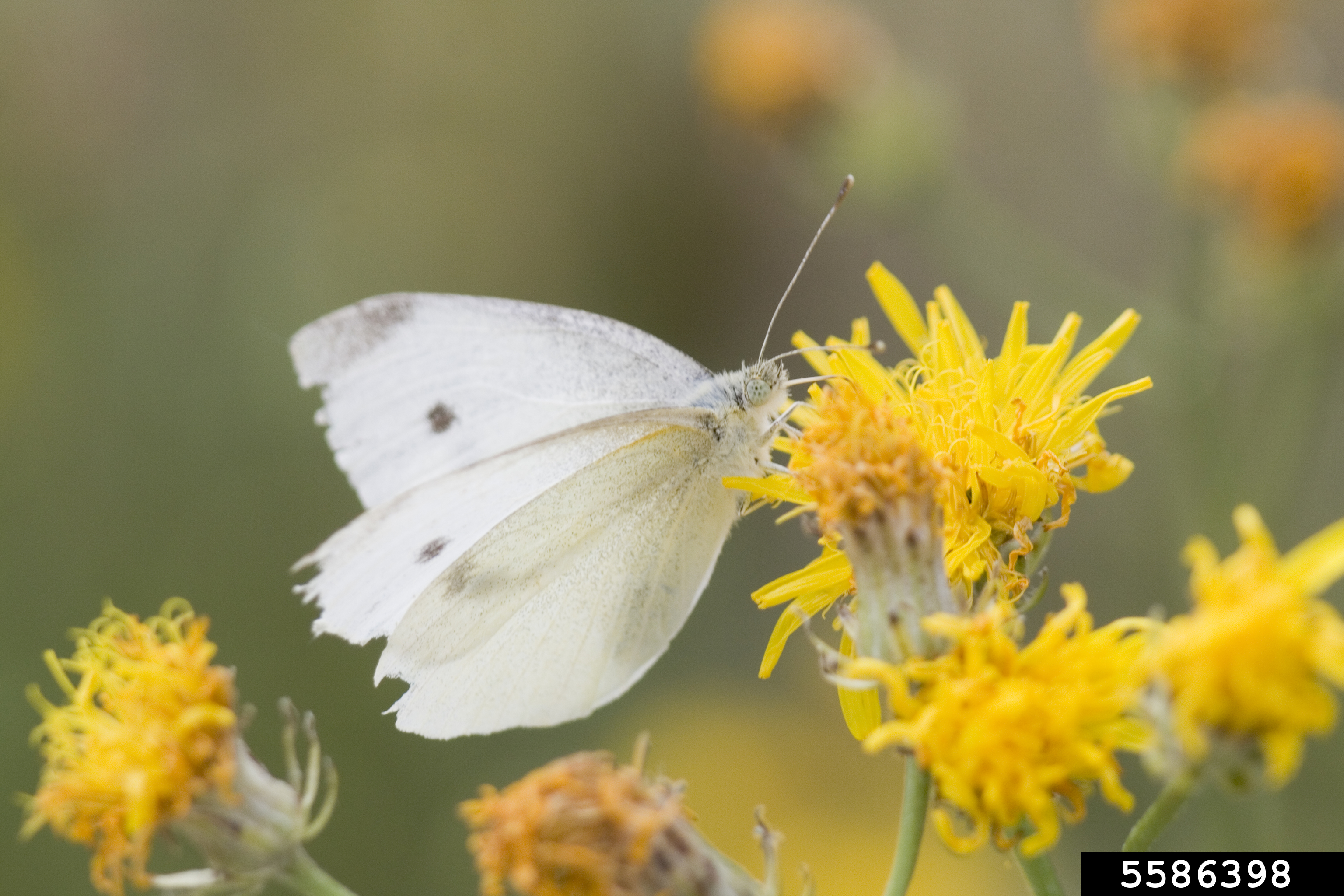
Imported cabbage worm, aka white cabbage butterfly
damaging

The imported cabbage worm (Pieris rapae) is a pest of brassicas including: cabbage, kale, cauliflower, brocolli, Brussels sprouts, pak choi and kohlrabi. If you see this easily recognizable, medium-size, white butterfly with black spots on its wing, you know it's in the neighbourhood. (The male butterflies have one spot, while females have two.) The butterfly itself does little harm: it's the caterpillars that do all of the damage. The caterpillars feed on leaves, characterized by jagged, irregular holes on outer leaves, sometimes tunneling into the vegetable itself.
The adult butterflies lay their eggs on leaves, which hatch into caterpillars. The caterpillars are 25 - 30 mm long, green and velvety, with a pale yellow line along its back and a broken yellow line along each side. There can be two or more overlapping generations per year, depending on weather. It over-winters as a chrysalis suspended from host plants.
Natural enemies include: parasitic wasps, spiders, birds, fungal and viral diseases.
Control:
- Rotate where you grow brassicas so that they are not planted in the same place for at least 3 years.
- Plant cabbage crops early before the eggs hatch out.
- Cover plants immediately with row cover to prevent the cabbage worm butterfly from laying eggs. Secure the cover so that butterflies don't get underneath. Leave in place until harvest.
- Remove weeds in the mustard family such as: stinkweed, shepherd's purse and flixweed which also attract the insect.
- Remove and destroy all plant debris after harvest.
- Shallow till in fall to destroy any chrysalides.
- Apply diatomaceous earth.
- Apply BTK on plants. This is a bacterium that gets into the gut of the feeding caterpillars and kills them. Note that BTK also kills other butterflies. Use with care.
Sources:
Williams, S.; Skinner, H. (2011). Gardening, naturally: A chemical-free handbook for the Prairies. Regina, Saskatchewan: Coteau Books.
Philip, H. G. (2018). Field crop and forage pests and their natural enemies in Western Canada: Identification and management. Saskatoon, Saskatchewan: Agriculture and Agri-Food Canada.

